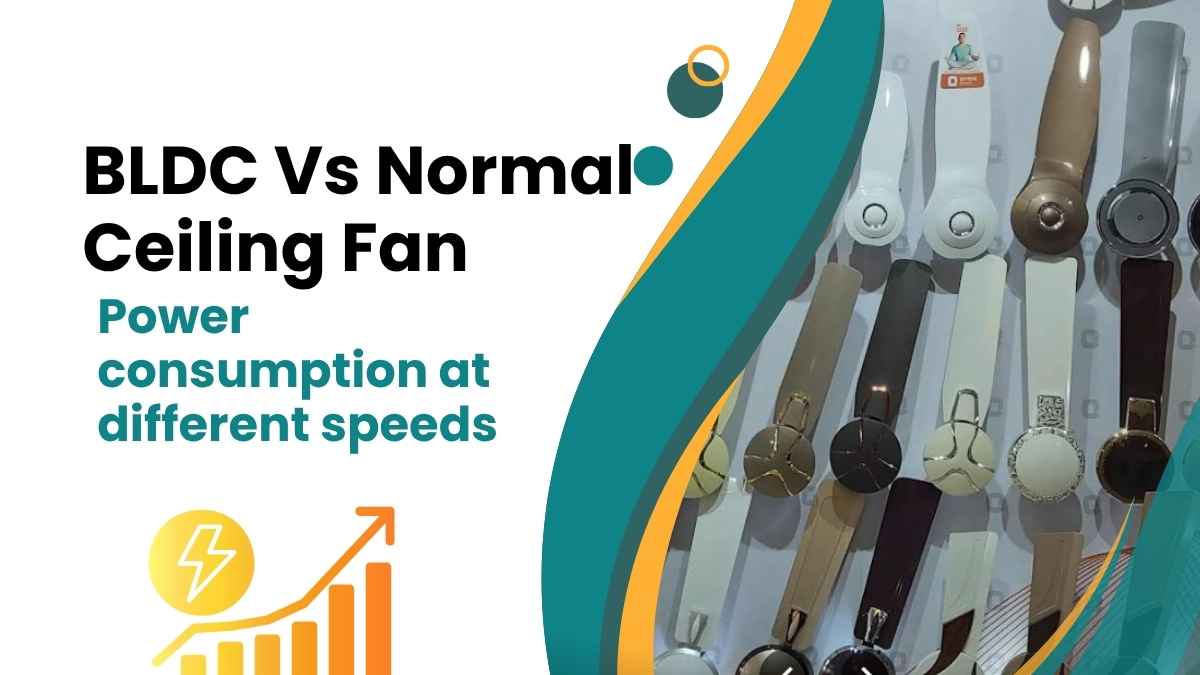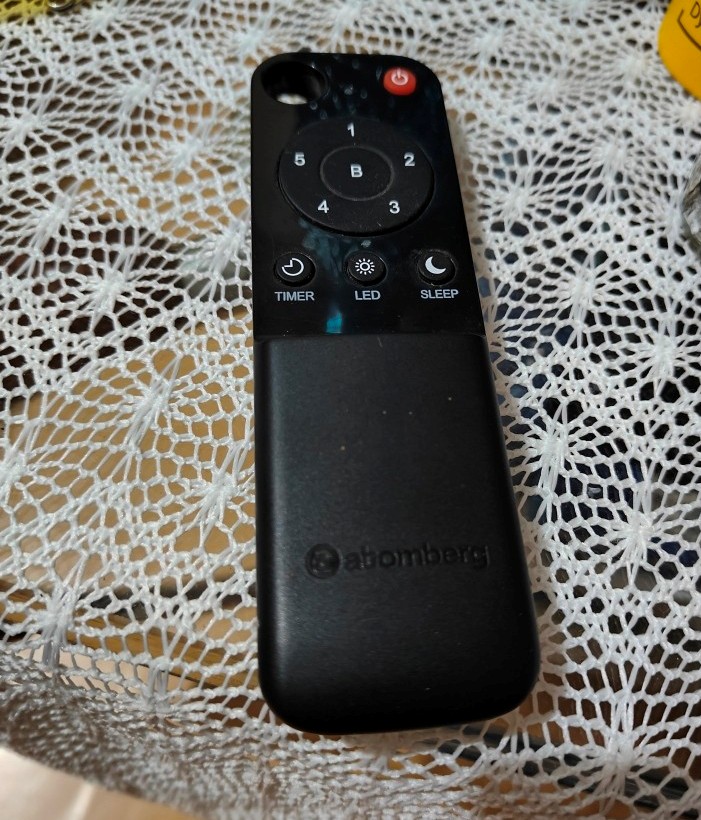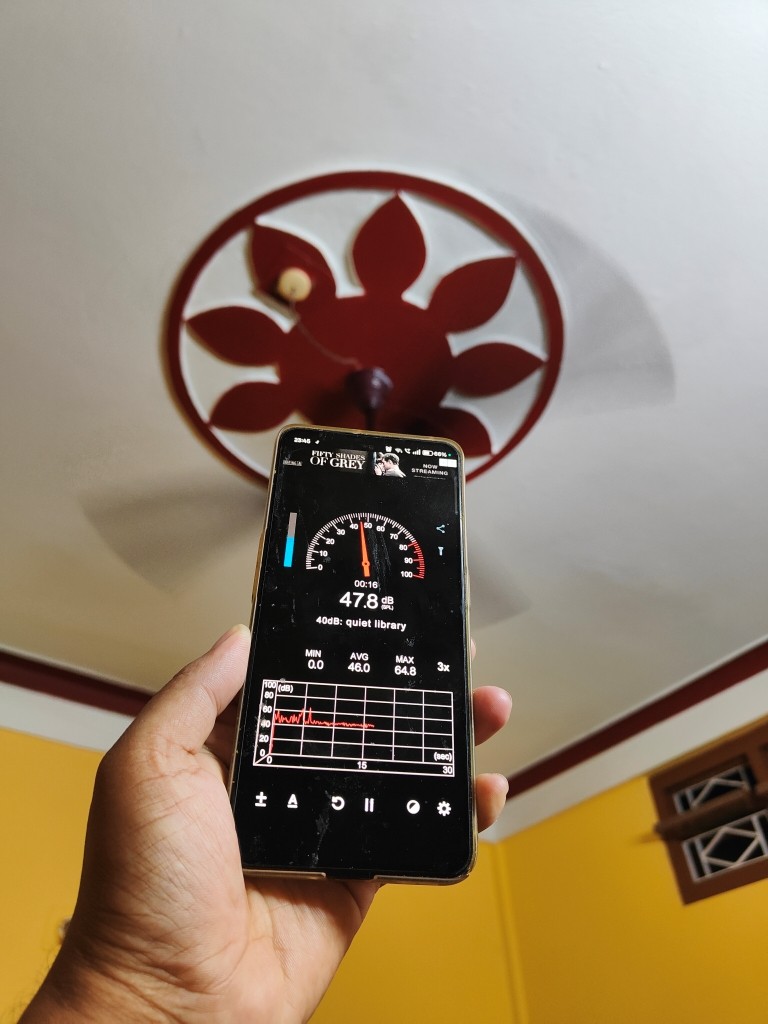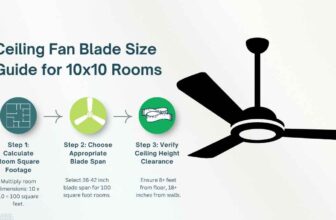
If the electricity bills from traditional ceiling fans are hard to stomach, then the alternative may be more in your price range. BLDC fans are just that — fans that have the comfort of normal fans without the higher power consumption.
To decide which ceiling fan technology is right for you, this guide breaks down and compares BLDC vs. normal ceiling fans.
| Feature | Normal Ceiling Fan | BLDC Ceiling Fan |
| Motor Type | Induction Motor | Brushless DC Motor |
| Power Consumption | High | Low |
| Speed Control | 3-5 Steps | Infinite |
| Starting Torque | Low | High |
| Noise Level | Moderate | Very Low |
| Cost | ₹1,500-5,000 | ₹3,000-8,000 |
| Energy Savings | Standard | 65% Less |
| Remote Control | Optional | Standard |
| Installation | Standard | Standard |
| Lifespan | 10-15 years | 15-20 years |
| Speed Stability | Varies with voltage | Constant |
What powers them?
AC Induction Motor
Brushless DC Motor
What’s a normal ceiling fan powered by?
True normal ceiling fans are powered by just that — induction motors. Alternating current flows through copper windings to create a magnetic field. Depending on how the motor is wound and what capacitor is used, there will be various speed options.
Some of the most common motor specifications for normal fans include:
- Single phase induction motor
- Copper windings
- Capacitor start
- 75-80 watts consumption
- Aluminum or copper coils
- Shaded pole motors
- Split phase motors
- Permanent capacitor motors
- Synchronous motors
- Universal motors
- Torque motors
- Hysteresis motors
What’s a BLDC fan powered by?
BLDC fans come with either internal or external drivers. Both types use a combination of permanent magnets, electronic switching, and DC power. The motors are controlled electronically rather than mechanically. The type of magnets and driver circuits used can vary by manufacturer.
BLDC fans can also come with different control options. They can be operated through remote control, wall regulators, or mobile apps. Some models also come digitally integrated with smart home systems. Electronic commutation eliminates the need for carbon brushes, providing virtually maintenance-free operation.
1. Technology
Typical ceiling fans are constructed with a single objective, which is to offer air circulation. This technology has been in use by homeowners since more than 100 years ago.
Although most people choose the conventional operation, normal fans may be fitted with various regulators to regulate speed. This is normally referred to as stepped speed control
BLDC fans come with advanced motor technology and different features:
- Remote controlled
- App controlled
- Timer functions
- Sleep mode
I have attached the photo of the Atomberg Renesa BLDC ceiling fan remote, which shows 5 fan speeds and timer settings.

If specific power savings are too important, BLDC fans could be a more cost-effective option in the long run.
2. Power Consumption at Different Speeds
| Speed Level | Normal Fan | BLDC Fan |
| Speed 1 (Low) | 16-20W | 6-8W |
| Speed 2 | 25-30W | 10-12W |
| Speed 3 (Medium) | 40-45W | 15-18W |
| Speed 4 | 55-60W | 20-25W |
| Speed 5 (High) | 75-80W | 28-32W |
When compared to normal fans, BLDC fans can save up to 65% of electricity.
Normal ceiling fan’s power consumption depends on the motor size and speed setting. Installation is also important. Poor wiring or wrong capacitor can lead to higher consumption, heating or reduced speed of the fan.
PRO TIP: Want the comfort and air circulation of ceiling fans with lower power bills? Check out BLDC fans with IoT features, which are smart products that provide remote monitoring and control, more energy savings over time.
Power saving features:
- Timer functions
- Sleep mode
- Boost mode
- Natural breeze mode
Regardless of the features, motor type and fan size, normal fans consume more power and show higher bills. Voltage fluctuations, dust accumulation and even bearing wear can increase power consumption in normal fans without proper maintenance.

BLDC fans are more efficient and maintain constant power consumption. These fans are voltage independent and can maintain same speed and power consumption even during voltage fluctuations. Motor heating and efficiency loss can happen over time if not maintained properly.
RELATED: Here’s our take on the 1200 mm vs. 1400 mm Atomberg ceiling fan air circulation options for different room sizes.
3. Energy Efficiency
Wattage (75 to 120 watts)
Wattage ( 28 to 42 watts)
Caring for energy efficiency and keeping electricity bills low takes a little bit of effort with the right fan choice.
How to calculate energy savings?
Calculating energy savings between normal and BLDC fans can be done in a couple different ways.
- Daily usage calculation: 8-10 hours daily operation
- Monthly units: Collect the stats in kWh consumption
- Annual savings: Consider the total yearly electricity cost
- ROI period: Check out when BLDC investment pays back
How to maximise energy efficiency?
BLDC fans show up to 50% decrease in daily energy consumption, you can track the energy consumption stats in their app. Following I have mentioned some basic methods that are actually works but, it is depending on usage:
- Using timer functions
- Selecting appropriate speed settings
- Regular cleaning and maintenance
- Using sleep mode at night
Normal fans can also be optimized for better efficiency. There are regulators you can get online for better control. If you can match the capacitor rating, the existing inefficient capacitor can be replaced for better performance.
Do you need special wiring for BLDC fans?
For the most efficiency and safety, no. This is where the easier installation comes in, especially for BLDC fans.
To be most performance, normal ceiling fans are supposed to employ proper gauge wires and quality switches. Rewiring may be required at some stage to bring the best out of older fans depending on the age of the electrical system.
The BLDC fans require special wiring, but LDC fans do not require special wiring, and proper earthing will ensure that the electronic circuits are not damaged by voltage spikes and electrical damage.
4. Cost Analysis
BLDC fans are more suitable for continuous operation like bedrooms and living rooms vs. normal fans. In the kitchen, normal fans may be a sufficient option vs. BLDC fans. However, BLDC stands up better to voltage fluctuations over normal fans.
What rooms are normal and BLDC fans best for?
| Location / Room Type | Normal Fan | BLDC Fan |
| Bedroom | Maybe | Yes |
| Living Room | Yes | Yes |
| Kitchen | Yes | Maybe |
| Study Room | Maybe | Yes |
| Children’s Room | Maybe | Yes |
| Office | Yes | Yes |
| Store Room | Yes | Maybe |
Be cautious installing normal fans in areas with voltage issues. BLDC fans are costlier initially, more so than normal ceiling fans.
Consider these factors when deciding which room to put each fan type. Mixing normal fans with BLDC fans could be an alternative approach.
RELATED – Want more energy-saving choices? Check out the BLDC 1400 mm Ceiling fan comparison
5. Noise Levels
Normal ceiling fans most often produce humming sounds at low speeds, but can also create wobbling noise with age. BLDC fans operate silently at all speeds. Noise levels can vary, but most common include:
40-50 dB at low speed, 55-65 dB at high speed
30-35 dB at low speed, 40-45 dB at high speed
Here is the screen shoot of the noise level stats captured by the Decibel Meter App

6. Durability & Lifespan
10-15 years
10 -15 Years
Normal fans hate motor wear, which slows the fan down and consumes more power. In places where there is constant use and 24-hour operation, such as commercial areas and offices, BLDC fans are more preferable.
In its perfect state, BLDC fan motors are virtually maintenance-free but dust accumulation in the motor or controller can cause overheating or damage.
A surge protector in the circuit (for normal or BLDC fans) is a great way to protect from electrical damage during voltage spikes.
7. Smart Features
Basic Controls
Smart-Ready
The BLDC fans are usually found in smart home integration than regular ceiling fans.
- Remote Control – The convenience of remote operation makes BLDC fans more user-friendly.
- Timer Functions – Both fan types can have timers with proper controls.
- App Control – Normal and BLDC fans can be app-controlled (Google Home and Alexa). But BLDC fans often come with native app support.
8. Voltage Fluctuations
Affected
Stable
Normal ceiling fans are one of the worst performers during voltage fluctuations. Speed can reduce significantly during low voltage. While BLDC fans aren’t completely immune, they are better at maintaining speed than normal fans.
The internal driver may also play a role in voltage management. BLDC fans with quality drivers will perform better than the same fans with cheaper drivers during voltage variations.
Drivers designed for wide voltage range may be made of better components, quality circuits, or advanced chipsets.
Using stabilizers and proper earthing can help protect both fan types and also extend the life of either motor type.
BLDC vs. Normal Fan: Which is right for you?
There are certainly advantages and disadvantages to both fan options.
With BLDC fans, you can adjust speed setting and save money on electricity in every speed level. However, in market, normal fans are readily available and cheaper for initial purchase (up to 50% cheaper).
The fan decision comes down to a few key considerations to determine which is a better choice:
Answering these questions will help you decide which ceiling fan type is right for you.
Still Have Questions?
Are you still not sure what is the best ceiling fan option for you? We’re here to help. Just ask your question in the comments down below. We’d be happy to give you a recommendation tailored to your needs.



